| Selecting an acoustic guitar by tone can be difficult. Not everyone agrees on what to call a certain sound. There are a number of factors that bring out the tone of an acoustic guitar: top, back and side tonal woods, size of the guitar, the finish, top thickness, bracing and strings. We do our best to explain these tones so you can get just the sound you’re looking for. |
| String Harmony
String Harmony is the concept that when you strum the 6 strings of an acoustic guitar you hear a singular harmonic chord or note. This sound has less wow factor when first playing it but ulitimately is the sound many people often enjoy in the long run. This tone tends to be pleasing to the ears when a guitar is strummed solo over a longer period of time. If you enjoy this type of tone then you be most interested in our 02, and 05, Series guitars. They both produce quite the harmony with the 05 Series bringing the mids more into play. |
| String Separation
String Separation can be thought of the as almost the opposite of String Harmony. With String Separation you hear many, if not all, of the acoustics 6 strings in a chord individually. This sound is one that produces very clear voicing and a wow factor when first played. Even after the strings have settled, this is still true for these guitars. It’s a more modern sound for acoustic guitars. You find more string separation in our brighter guitars and our 07 Series guitars. |
| Overtones
Acoustic Guitars that have overtones have a more complex and haunting sound. Certain notes may be highlighted but overall the tone provides a lot of layers. Engelmann Spruce tops produce this type of harmonic characteristic. Our 06 Series freatures an Englemann Spruce top and exhibit these overtones. |
| Bright
Bright guitars tend to have a very distinct beginning and end to individual notes and chords. They have a punchy sound which works well for many player’s styles. |

- Home
- 01 Ayers Acoustic Guitar Western Red Cedar Rosewood
- 02 Ayers Acoustic Guitar Sitka Mahogany
- 03 Ayers Acoustic Guitar Mahogany
- 04 Ayers Acoustic Guitar Sitka African Mahogany
- 05 Ayers Acoustic Guitar Sitka Ovangkol
- 06 Ayers Acoustic Guitar Engelmann Maple
- 07 Ayers Acoustic Guitar Sitka Rosewood
- 09 Ayers Acoustic Guitar Koa
- 100% Trade In on Your Purchased Ayers Guitar
- 60 Day Money Back Guarantee
- About Us
- Ayers Acoustic Guitar
- Ayers Acoustic Guitar Body Size Comparison Chart
- Ayers Acoustic Guitar Comparison Chart
- Ayers Acoustic Guitar Videos
- Ayers Classical – Handmade Acoustic Guitars
- Ayers Custom Acoustic Guitar Program
- Ayers Travel Acoustic Guitars
- Ayers vs Other Brands
- Contact Us
- FAQ
- Final Closeouts
- Guitars
- Introductory Prices
- Original Owner Lifetime Warranty
- Privacy Policy
- Selecting a Guitar by Skill Level & Experience
- Selecting an Acoustic Guitar by Price
- Selecting an Acoustic Guitar by Tone
- Selecting an Ayers Acoustic Guitar by Series
- Specials and Closeouts
- Testimonials
- Tone Woods Used in Acoustic Guitars
- Top ways YOU benefit from an Ayers Guitar
- Gallery
- Guitars
- Uncategorized

